Text
bro wake up new pterosaur with opposable thumbs just dropped
18K notes
·
View notes
Photo
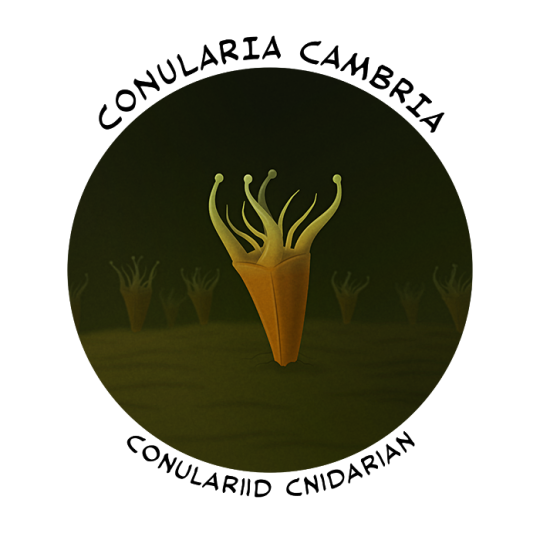
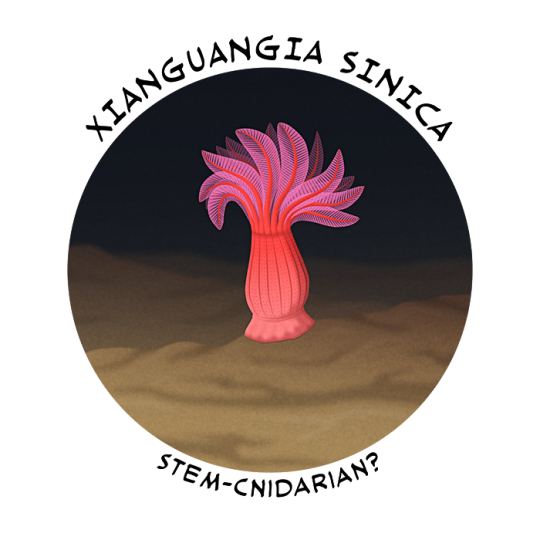
Cambrian Explosion Month #07: Phylum Cnidaria – The Weird Ones
Odd shell-like structures that resemble angular ribbed cones with four-way symmetry appear in the fossil record starting around the mid-to-late Cambrian (with a possible Ediacaran record).
Known as conulariids, these fossils are so distinctive and different from anything else that for a long time their evolutionary affinities were unknown, and they were considered to be a “problematic” group. But in recent years they’ve been identified as being cnidarians, generally thought to be close relatives of modern stalked jellyfish.
Conularia cambria was one of the earliest definite conulariids, known from the states of Wisconsin and Minnesota, USA, and dating to the Late Cambrian (~490 million years ago). Up to about 5cm long (2"), its shell lacked the ribbed texture of most other conulariids but it would have otherwise looked very similar to later species – living attached to the sea floor by the pointed end of the cone, with tentacles protruding from the wider end at the top.
Conulariids were also unique among cnidarians for producing pearls inside their shells similar to those found in molluscs.
And despite being relatively rare and low-diversity, conulariids were a surprisingly long-lived group. Not only did they last throughout the rest of the Paleozoic Era, but they then survived the Great Dying mass extinction at the end of the Permian and only went completely extinct at the end of the Triassic, about 201 million years ago.
———
Another unusual fossil from the mid-Cambrian Chengjiang biota in southwest China (~518 million years ago) might have been a cnidarian. Xianguangia sinica was a tiny 2cm tall (0.8") sea anemone-like animal with a cylindrical body, an attachment disc at the bottom, and an upper whorl of around 16 tentacles with feather-like extensions that suggest it was a filter-feeder.
It’s generally considered to be a “stem-cnidarian”, part of an extinct early lineage that has no close modern relatives. It might represent a weird offshoot that experimented with a different body plan and feeding strategy than the rest of the group, or it might be a late-surviving example of what ancestral cnidarians originally looked like.
But other studies have instead linked it with potential ancestors of comb jellies, so its classification is still rather uncertain.
———
Nix Illustration | Tumblr | Pillowfort | Twitter | Patreon
92 notes
·
View notes
Photo

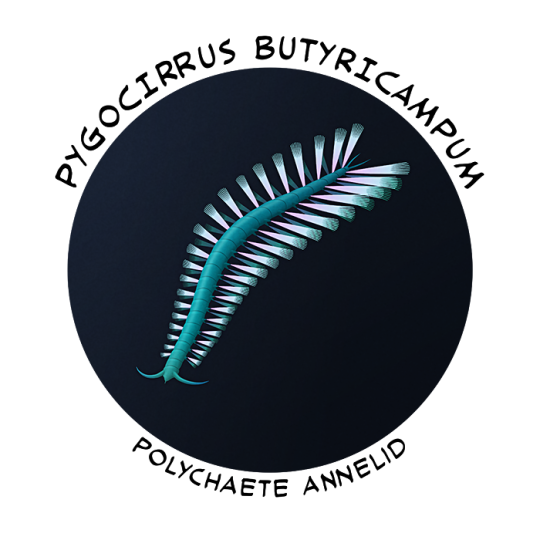
Cambrian Explosion Month #22: Phylum Annelida – Plumes and Tails
Annelids in the Cambrian Period were mainly represented by bristle worm polychaetes, with most known species belonging to early stem lineages. And while more modern-style polychaetes would become abundant during the early Ordovician, the earlier Cambrian forms were still surprisingly diverse.
Canadia spinosa was one of the most distinctive-looking species, known from the Canadian Burgess Shale fossil deposits (~508 million years ago). Around 4.5cm long (1.8"), it had tentacle-like sensory palps and an eversible proboscis, along with large plumes of bristles along its body. Some specimens are preserved in enough detail to make out a pattern of fine ridges on these bristles, which may have made them look iridescent in life.
It also had small branched gills located between most of its body segments, unlike those of other annelids but with some similarities to those of molluscs. It’s not clear whether this is a retained feature from an ancestral mollusc-like lophotrochozoan ancestor, or if it’s a convergence unique to Canadia.
Although it’s often considered to have been a swimming species, its fairly stiff body and the layout of its bristles suggest it was more likely a seafloor crawler.
———
Pygocirrus butyricampum is known from the Sirius Passet fossil deposits in Greenland (~518 million years ago). It was was around 2cm long (0.8") and had bundles of swimming bristles that became longer towards the rear of its body.
Tendril-like structures called pygidial cirri on its final segment closely resemble those found on modern-style polychaetes – and since this feature is often considered to be a defining characteristic of the “crown group” lineage of modern-style annelids, Pygocirrus must have been either very closely related to them or an actual crown annelid itself.
Its presence in the Sirius Passet ecosystem also makes it one of the oldest known annelid fossils, and indicates that crown polychaetes may have evolved much earlier than previously thought, living alongside their stem cousins for much of the Cambrian.
———
Nix Illustration | Tumblr | Pillowfort | Twitter | Patreon
92 notes
·
View notes
Photo
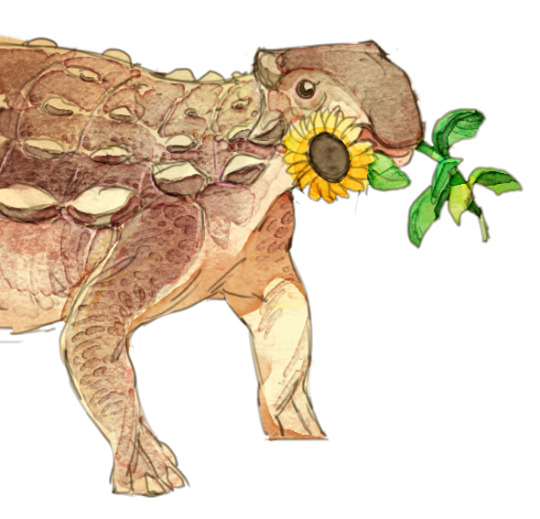
Ankylosaurus
11K notes
·
View notes
Photo

The recently-described Aquilolamna, or eagle shark, was a strange Cretaceous fish. Looking like a mix between a manta ray and a megamouth shark, it combined a torpedo-shaped body with extremely elongated pectoral fins, and was most likely a filter-feeder.
Patreon • Ko-fi • Facebook • Twitter • Prints & Merch
#Aquilolamna my dearly beloved#I adore their flappy fins SO much#ideal hugging bauplan#Cretaceous#Sharks
1K notes
·
View notes
Photo
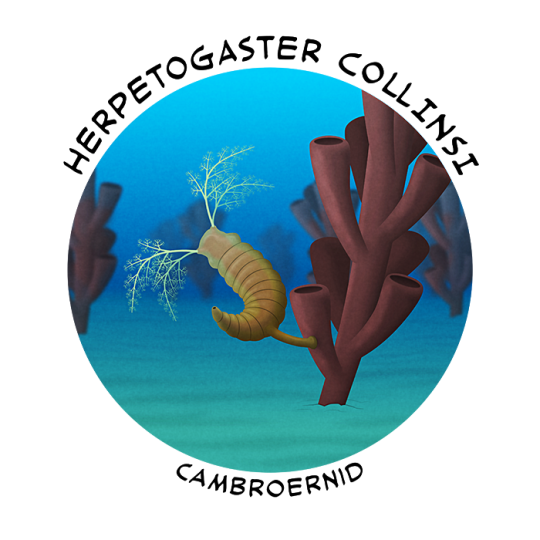

Cambrian Explosion Month #14: Phylum(?) Cambroernida
Modern hemichordates and echinoderms are the closest living relatives of each other, part of a larger lineage of deuterostome animals known as ambulacranians – but they also seem to have had some other strange cousins during the Cambrian.
Cambroernids were a bizarre group with branching feeding tentacles and a gut enclosed in a coiled sac. They came in a range of forms from worm-like to cup-like to disc-shaped, and despite their fossils being known since the early 1900s their evolutionary affinities were a longstanding problem. Various species had been interpreted in the past as sea cucumbers, jellyfish, tunicates, gnathiferans, or lophophorates, but in recent years they’ve been recognized as all being related, and linked to the ambulacranians.
And it’s still not entirely clear where in that group they actually belong. They were probably a weird early stem lineage, but they might also be early stem-hemichordates or stem-echinoderms.
Herpetogaster collinsi was one of the main links in figuring out the relationships of the cambroernids. Known from both Nevada, USA, and Canada, this worm-like animal lived around 516-508 million years ago, with a closely related species Herpetogaster haiyanensis also known from southwest China (~518 million years ago).
It was about 4cm long (1.6") and had a slightly helical clockwise-curling body with about 13 segments, and long paired tentacles on its head that branched in a fractal-like pattern. A flexible extendible stalk-like structure with an attachment disc grew from the middle of its body, sometimes attached to the sponge Vauxia, and multiple individuals have been found clustered together on the same fossil slabs suggesting they often lived in groups.
Its actual ecology isn’t really known. It was probably a suspension feeder, extending its tentacles to catch plankton and organic particles in the water, but some specimens have been found in association with small hyolith shells, and in the Chinese species some of those shells are preserved inside its mouth and gut cavity – suggesting a possible predatory mode of life instead.
———
Eldonia ludwigi is known from hundreds of specimens from the Canadian Burgess Shale (~508 million years ago), with a slightly older Cambrian species Eldonia eumorpha also known from China (~518 million years ago).
It was originally mistaken for a sea cucumber when it was first discovered in the early 1900s, then a few decades later it was reclassified as a jellyfish based on its round disc-like shape, and then later again it was linked with brachiopods and bryozoans due to its cluster of tentacles being interpreted as a lophophore.
But with the discovery of Herpetogaster its true cambroernid affinities became more obvious. Eldonia had the same clockwise-coiled gut and branching feeding tentacles, but lacked the attachment stalk and instead had a more flattened form with its sac-like body expanded and fused into a tough but flexible wide disc.
It grew up to about 10cm in diameter (4") and seems to have been similarly gregarious to Herpetogaster, often found in groups of multiple individuals. Sometimes lobopodian worms are also found in close association with Eldonia, possibly predating or scavenging on them.
But much like its relative its overall ecology is still uncertain. Back when it was thought to be a jellyfish it was assumed to be a free-swimming animal (with the lobopodians riding around on it!), but it was later recognized as a mostly-stationary creature that lived laying on the seafloor. Even then, though, it was unclear which way up it rested – the lophophore interpretation assumed it had the tentacles waving up above itself, suspension feeding, but the fossils are almost always preserved the other way around with the tentacles facing downwards below the disc.
Possibly it could extend its tentacles out beyond the disc and sweep them across the seafloor, feeding on whatever organic detritus or small prey it encountered.
———
Whatever the cambroernids were doing, they must have been fairly good at it because the Eldonia-like forms survived for around 140 million years. Impressions of their disc-shaped bodies are found in various locations around the world throughout the early Paleozoic, and the last known fossils come from the mid-Devonian about 380 million years ago.
———
Nix Illustration | Tumblr | Pillowfort | Twitter | Patreon
#yayyyyyy#i love herpetogaster!!!#and Lobopods riding on swimming Eldonia..#that’s such a cool idea ahxnahsha#cambrian
98 notes
·
View notes
Photo
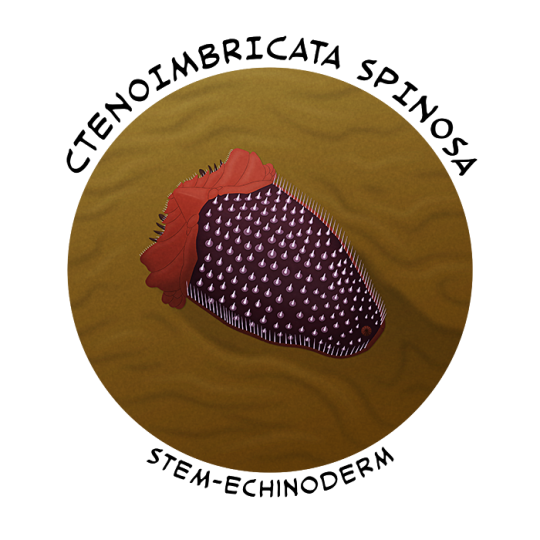
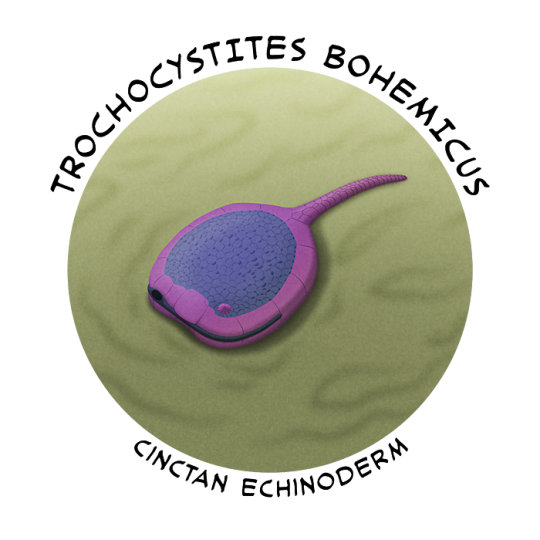
Cambrian Explosion Month #10: Phylum Echinodermata – Bilateral Origins
Modern echinoderms typically have five-way radial symmetry as adults, and don’t at all resemble other deuterostomes – but their larvae give away their ancestry, still retaining bilateral traits and only developing radial symmetry when they mature and metamorphose.
The earliest definite echinoderms are known from the early Cambrian, about 525 million years ago, which seems to be around the point when early members of the group first developed biomineralized skeletons and became much more likely to fossilize. However, they must have an evolutionary history going back further than that, and molecular clock estimates suggest their last common ancestry with their closest relatives the hemichordates was in the Ediacaran about 570 million years ago.
For a long time the transition from bilateral to radial symmetry was a mystery, but various fossil discoveries are starting to reveal how this unique group of animals evolved.
Ctenoimbricata spinosa seems to be part of a stem lineage similar in appearance to what some of the earliest true echinoderms would have looked like. Discovered in northern Spain and dating to about 510 million years ago, it was a tiny 2cm long (0.8") bilaterally-symmetric animal with a flattened plated body covered in spines.
It was probably a pharyngeal basket feeder, pulling in water and sediment through the wide mouth opening at the front of its body, straining it all through its internal gills to filter out food particles, and then spitting the rest back out again.
———
A group called cinctans probably represent the next branch in echinoderm evolution, showing some mild asymmetry in their racket-shaped bodies.
Trochocystites bohemicus here lived about 505 million years ago in Czechia. Just 3cm long, its mouth was located on the right side of the front of its body and it had a stiff arm-like appendage at its rear end that probably helped to stabilize it on the sea floor.
It was probably a stationary filter-feeder with a lifestyle similar to some modern tunicates, pumping water in through its mouth, over its gills, and out through an extra hole in the middle of its front end that was covered by a moveable plate.
———
Nix Illustration | Tumblr | Pillowfort | Twitter | Patreon
118 notes
·
View notes
Photo
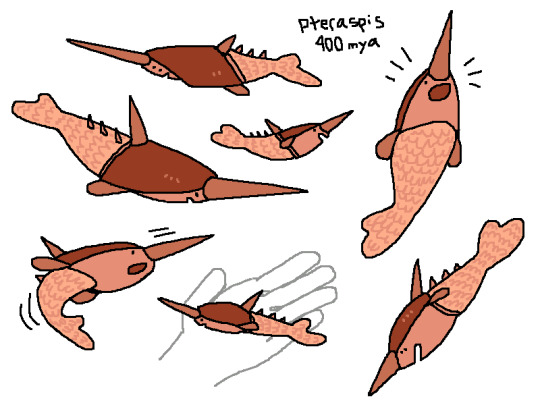
Pteraspis was a jawless fish from the Devonian period with a funny nosey that I love
2K notes
·
View notes
Text
Helicoprion: What if, like, teeth,
Mesosaurus: Yeah?
Helicoprion: but WHEEL
Mesosaurus: No don’t -
Helicoprion:

(Image by ДиБгд)
40K notes
·
View notes
Video
youtube
Timeline of the Evolution of Life. PART I: Paleozoic (541- 252 million years ago)
This vast era starts when the first animals emerged; and ended with the greatest extinction the Earth has ever faced.
instagram @mariolanzarensis
Prints, shirts and more of my artwork here
#!!!!!!!!!!!!!#this is so lovingly made!!!!!!!#so much info here!!!!!!!!!#this is the best timelapse i've ever seen#i wanna memorize it
31 notes
·
View notes
Photo

Pentremites
Artwork by Franz Anthony / @franzanth
This plant-like animal belongs to the group called “sea buds,” known as blastoids in science. Like its relatives the sea lilies, they lived on the ocean floor, catching plankton with their bristles.
—
252MYA creates custom-made artwork for private collections and editorial, scientific, or educational projects.
152 notes
·
View notes
Photo

Pentremites is a plant-like animal that belongs to a group called “sea buds,” known as blastoids in science. Like its relatives the sea lilies, they lived on the ocean floor, catching plankton with their bristles.
—
Tumblr is now blocked here so I won’t post often. Follow me elsewhere:
Facebook · Instagram · Twitter · Ko-fi · Patreon · Shop
213 notes
·
View notes
Photo
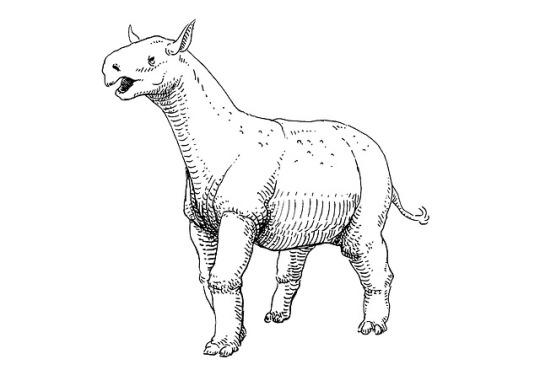
Paraceratherium is an extinct relative of the rhinoceros and is one of the largest terrestrial mammals to ever live. Mammalian megafauna is severely underrated. Who’s your favorite Cenozoic big boy?
Keep reading
#!!!!!!!!!!#BIG TRUE#THEYRE LOVELY LONG RHINOS#so many cenozoic big boys....#Chalicotherium is definitely up there#as is of course megatherium#ooof and ive seen megatherium bones up close#in the wild#like we found one#so thats special#glyptodons are also up there
191 notes
·
View notes
Photo
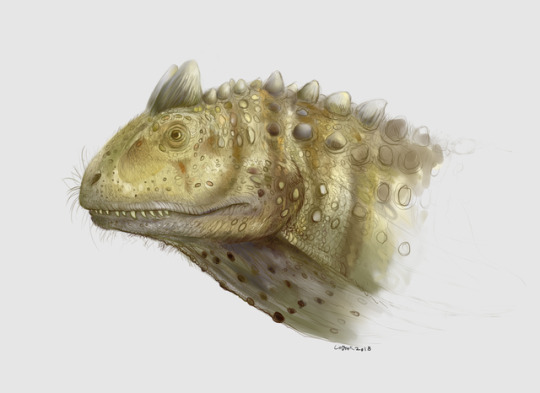
Hey so I did a rough Carnotaurus study for warm up today.
60 notes
·
View notes
Photo
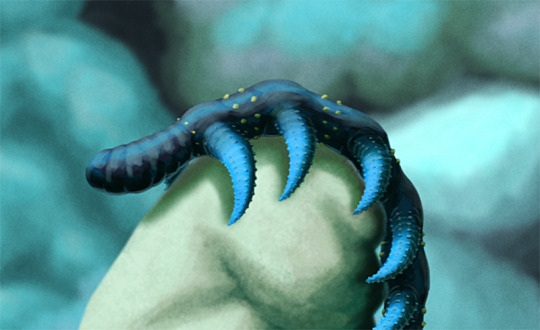
Daily Paleo Art Month #17: Diania
Living in the early Cambrian oceans around 520 million years ago, Diania is known from the Chinese Maotianshan Shales. It was a 6cm long (2.4in) member of the armored lobopodians, a group that also includes the bizarre Hallucigenia and modern velvet worms.
Diania had ten pairs of robust, spiny legs which appear to have been segmented and jointed – a feature not seen before in any other lobopodians, and which may form an evolutionary link between them and the arthropods.
35 notes
·
View notes
Photo
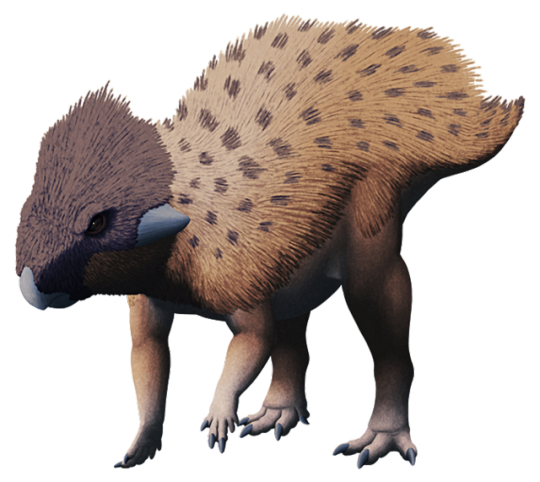
Ceratopsian Month #04 – Auroraceratops rugosus
Auroraceratops (“dawn horned face”) lived during the Early Cretaceous of China (~130-100 mya). Around 2m long (6′6″), it had a shorter and wider snout than other early ceratopsians, with a more flattened broader head shape.
It was closely related to other small Asian species like Koreaceratops, and was probably primarily bipedal due to its proportionally short arms. But, since it falls at a transitional point in ceratopsian evolution between bipedal ancestors and quadrupedal later forms, it may have adopted a four-legged posture while feeding or moving at slow speeds.

Its skull had several patches of thickened bone, found directly in front of its eyes and on its lower jaw. These could have had some visible tough keratinous coverings in life – although I’ve not depicted any here – and could potentially have been used for pushing and butting during fights.
The back of its small frill shows evidence of attachment sites for its jaw muscles, suggesting that ceratopsian frills may have originally evolved to support large powerful chewing muscles before being secondarily modified into elaborate display structures.
184 notes
·
View notes
Photo

Eocene Monitor Lizard Had Four Eyes
http://www.sci-news.com/paleontology/eocene-monitor-lizard-four-eyes-05874.html
152 notes
·
View notes